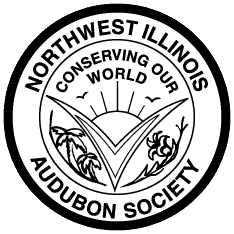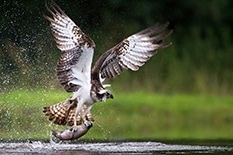Osprey (Pandion haliaetus)
This year’s theme for World Migratory Bird Day is water and the Osprey is one of the ten featured ambassador birds to help educate the importance of water to birds. Osprey are typically found near any body of water, from freshwater to marine. They are a unique in that they are the only hawk that feeds primarily on fish.
Ospreys are mostly brown on the upperparts and white on the underside. The adults have a brown eyeline stripe, yellow eyes, and a sharply hooked bill. They have slender bodies with narrow wings and long legs. They are easily identified in flight with their brown wrists and a kink in their wings, creating an M shape in flight. To catch their prey, they dive feet first into the water and often fully submerge (no more than three feet below surface) to grasp their prey. They have unique feet with a reversible outer toe, which allows them to hold on to their slippery prey with two toes in front and two in back.
Ospreys usually mate for life. Together they build very large nests and require a platform-like surface or similar placement. Humans can assist by providing nesting platforms in areas where Osprey breed. Ospreys are endangered or threatened depending on the state due to the use of DDT pesticides from the 1950s to 1970s. The pesticides poisoned the birds (as well as other species) and caused their eggshells to thin, leading to severe decline in populations. Today, their populations are improving but they are still at risk of entanglement and death due to plastic pollution that can be tangled in their nests.
* Thanks to allaboutbirds.org.

